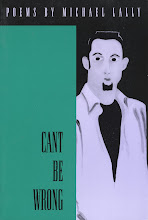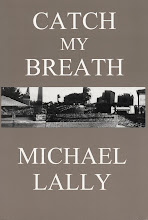
THE SHOW:
It’s called “Joe Brainard The Nancys,” and it’s at Tibor De Nagy Gallery, 724 Fifth Avenue in New York City, until May 17th.
If you are anywhere near Manhattan in the next few weeks, catch this show.
It’s a small one, taking up only one small room of the gallery space, with probably less than thirty pieces in it. But it captures so much of what makes Brainard’s art uniquely delightful, as well as surprisingly challenging.
The “Nancy” of the title is the cartoon character created by the Bronx native Ernie Bushmiller in the 1940s (descended from an earlier newspaper cartoon series he had taken over, which starred the once flapper Fritzi, who became Nancy’s stylish Aunt in the “Nancy” series of cartoons that were very popular when Branaird—and I—were boys.
Joe began using Nancy’s image in his art of the early 1960s, but it was a series of “IF NANCY WERE…” pieces done in 1972 and an oil dypitch in ’74, that defined his art through the appropriation of the Nancy figure in ways that no other collection of his work could do as well or as completely, to my mind.
There’s collages (Nancy waving to us as she pops out of an empty pack of Tareyton cigarettes—Joe’s brand), throw aways (IF NANCY WAS JUST AN OLD KLEENEX—her image coaxed out of stains and curves of a crumpled up old Kleenex tissue, that you have to see in person to appreciate not just the whimsy of, but the skill of, and the subtly disturbing image of, and possibly message of as well, though I doubt Joe would have agreed with the latter), pastels and ink drawings, gouaches and etchings and graphite drawings (including several versions of how De Kooning might have depicted her), and two oil paintings (that form a diptych and put to rest any doubts about Joe’s work with oils, including his own).

THE BOOK:
It’s called The Nancy Book, and is published, and very beautifully, by a new press, Siglio. And it too is well worth checking out.
It not only contains more Nancy art of Joe’s than the show does (including several collaborations with various poets, e.g. Frank O’Hara, James Schuyler, Robert Creeley, Ted Berrigan, etc.) but it also contains some of Joe’s writing about, or including, Nancy, and two essays about Joe’s Nancy art by two of his good friends, the poets Ann Lauterbach and Ron Padgett.
Ann’s essay is the more comprehensive and a good introduction not just to Joe Brainard’s Nancy art, but to his art and writing in general. She has some great insights into Joe’s use of Nancy as an icon to be played with and played off of, and some fine contextualizing, as they say, of the work.
One of the things she mentions, is Joe’s not doing much artwork (I think she says none, though I know that’s not entirely true) in the last fifteen years of his life, and, in my experience with him, making that decision in part because he felt he had failed to achieve the kind of art-world greatness that others had, or that he had envisioned for himself.
Ever since his death, over a decade ago, I’ve felt sorry that he hadn’t lived to see the outpouring of not just appreciation for his work (in every sense of the word, the prices have been rising steadily for one sign of increased value, at least in the eyes of collectors) but of genuine affection, even from those who never knew him.
His art was playful, and personal, in a way that was easily dismissed by the more serious practitioners of art-world politics and arbiters of art-world rankings. Unfortunately, Joe sometimes fell victim to judging his work through the eyes of others who didn’t get it the way the rest of us who always loved his work have always “got” it.
But Ann Lauterbach helps not only clarify the challenge for those approaching his work for the first time, despite its accessibility, but also the challenge to the art world to get it right, Joe Brainard’s place in their pantheon. A well deserved place, as time only continues to bear out.
And Ron Padgett’s essay—coming from one of Joe’s friends who knew him the longest, and has written the definitive memoir about him, called simply JOE (Coffee House Press) is shorter—I assume not to duplicate some of Ann Lauterbach’s explication, but his added comments on some of the realities of their shared boyhood that are relevant to Joe’s use of Nancy in his work, and his intimate knowledge of Joe’s life, make his essay equally enlightening.
The whole book is just one of those treasures that contain more than a book ever seemed intended to, and yet seem to fulfill what books ideally are most suited for.
I mean it’s a pleasure to read it, to spend time with the art work reproduced in it, to have my own little conversation with the contributors to it, as well as with the spirit of Joe himself, and to just simply hold it in my hands and feel the heft, the weight of its contents and importance, at least in my library, and sooner or later, hopefully, the rest of the world’s.

















No comments:
Post a Comment